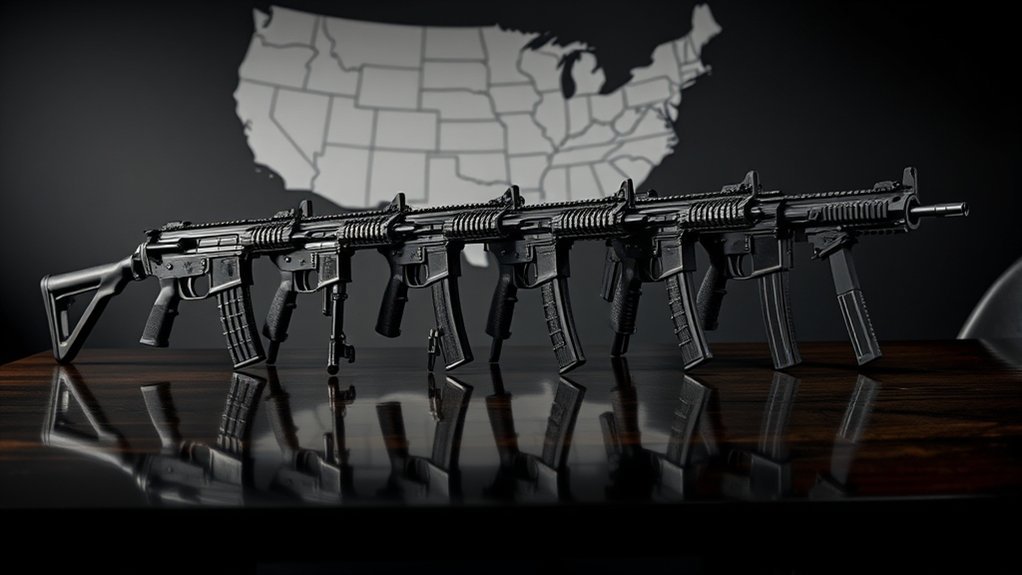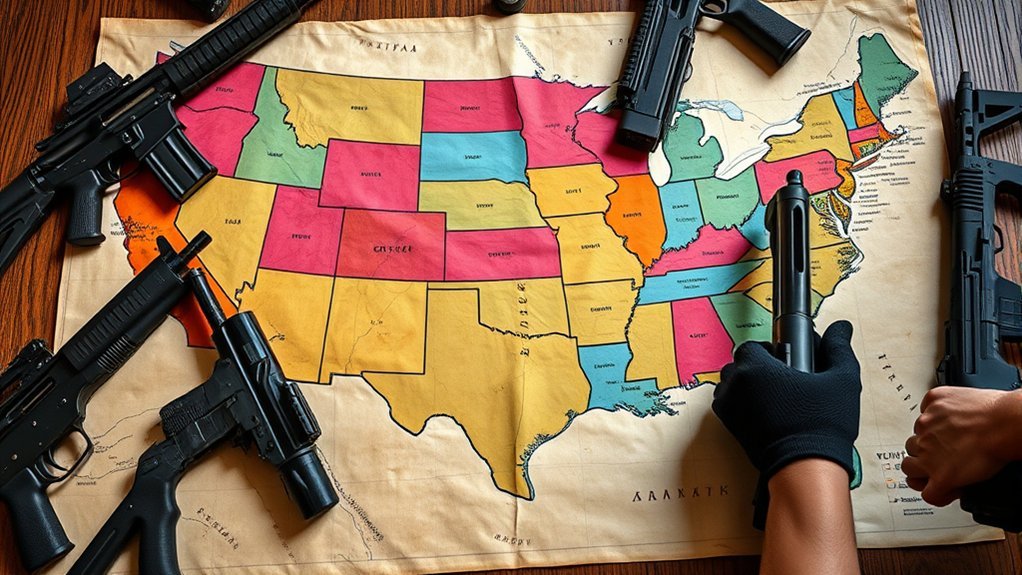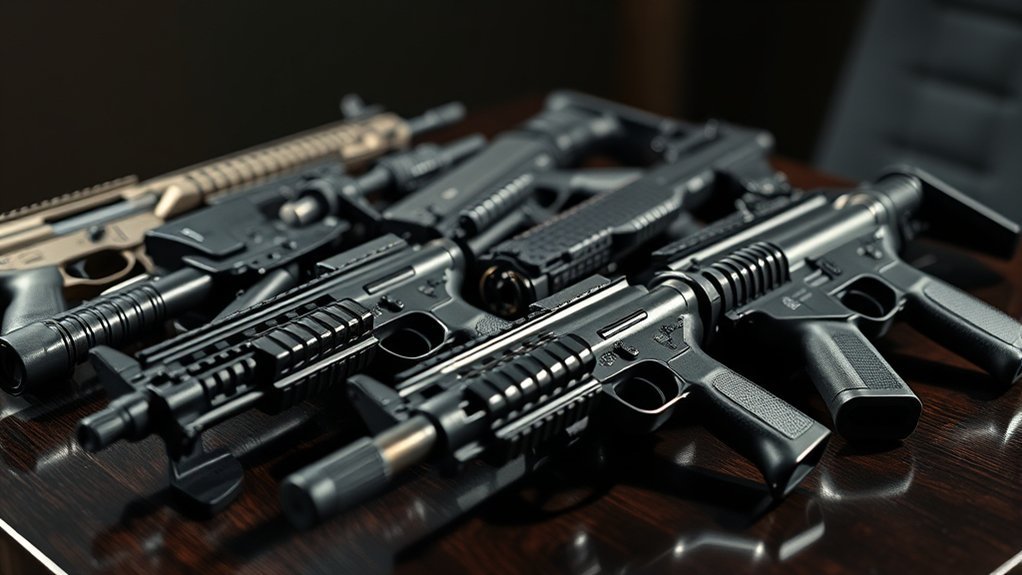Imagine a gun owner in California who purchases a firearm legally, only to find out later that it’s classified as an assault weapon under state law. This scenario highlights the confusing landscape of assault weapon definitions across jurisdictions. With federal guidelines now outdated and varying state regulations, understanding these distinctions is essential. How do these differences affect enforcement and public perception of safety?
Federal Definition of Assault Weapons

When examining the federal definition of assault weapons, it is crucial to understand that this classification is not universally agreed upon, leading to significant debate. The federal government primarily defines assault weapons through the 1994 Assault Weapons Ban, which targeted specific semi-automatic firearms and high-capacity magazines. However, this definition expired in 2004, and no thorough federal legislation has since replaced it. As a result, the term “assault weapon” lacks a standardized legal definition, often varying by context. Critics argue that the criteria used to define these weapons can be overly broad or ambiguous, which complicates enforcement and regulation. Ultimately, without a clear federal standard, the discussion around assault weapons remains fragmented and contentious, influencing both policy and public perception.
State Regulations: A Patchwork of Laws

Although states have the authority to regulate firearms, the resulting laws regarding assault weapons are often inconsistent and vary greatly across the country. Some states impose strict bans on specific models or features, while others allow nearly unrestricted access. You’ll find that definitions of what constitutes an assault weapon differ markedly, leading to confusion for gun owners. For instance, California’s laws include a thorough list of banned features, whereas states like Texas have minimal restrictions. This patchwork approach complicates compliance for individuals and retailers alike. Additionally, ongoing legislative changes can further shift regulations, creating an environment where staying informed becomes essential. Ultimately, maneuvering through these laws requires careful attention to local regulations to guarantee legal compliance.
Comparing Definitions: Assault Weapons vs. Other Firearms

Understanding the definitions of assault weapons is essential for distinguishing them from other types of firearms. Assault weapons typically include semi-automatic firearms with certain features, such as detachable magazines and pistol grips, that are designed for rapid fire. In contrast, other firearms, like traditional hunting rifles and shotguns, often lack these features and are primarily intended for sport or hunting. The key difference lies in the design and functionality, which affects their classification under various laws. While many jurisdictions focus on specific features to define assault weapons, other firearms are generally categorized based on their intended use. This distinction shapes discussions around regulation, ownership, and public perception of firearms within society. Understanding these nuances is vital for informed debates on gun rights and regulations.
Impact of Definitions on Gun Policy
As definitions of assault weapons vary across jurisdictions, they greatly influence gun policy and legislation. These definitions determine which firearms are subject to restrictions, affecting ownership, sales, and usage. For instance, a broad definition may encompass a wide range of semi-automatic firearms, leading to stricter regulations. Conversely, a narrow definition might limit restrictions to specific models, allowing more lenient access. This inconsistency can complicate enforcement efforts and create legal ambiguities for gun owners and law enforcement alike. Additionally, differing definitions can impact the allocation of resources for compliance and education efforts, ultimately shaping the effectiveness of gun control measures. Understanding these implications is vital for policymakers aiming to create coherent and effective legislation.
Public Safety Implications of Varying Definitions
Varying definitions of assault weapons can greatly impact public safety, as they shape the types of firearms accessible to the general population. When jurisdictions implement inconsistent definitions, it creates confusion among law enforcement and citizens alike. This inconsistency can lead to:
- Increased gun violence: More accessible weapons may escalate violent incidents.
- Challenges in enforcement: Law enforcement may struggle to apply laws uniformly, leading to gaps in public safety.
- Public perception: Differing definitions can affect community trust in safety measures and law enforcement.
Conclusion
In summary, the inconsistent definitions of assault weapons across jurisdictions create a legal landscape as tangled as a spider’s web. This patchwork not only complicates enforcement but also influences public perceptions of safety and responsibility among gun owners. Understanding these variations is essential for effective policy-making and community awareness. As you navigate this complex issue, staying informed about local laws can help foster a safer environment for everyone, ultimately bridging the gap between regulation and public safety.

